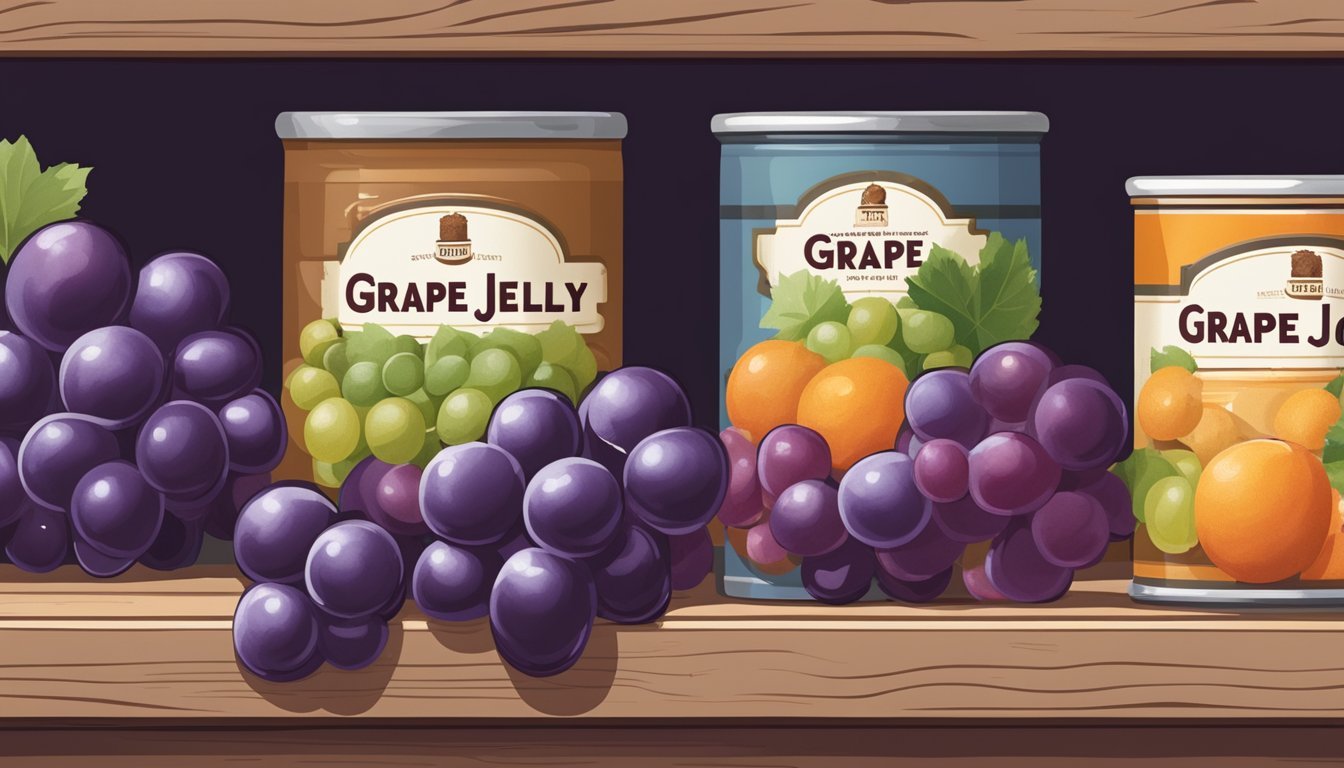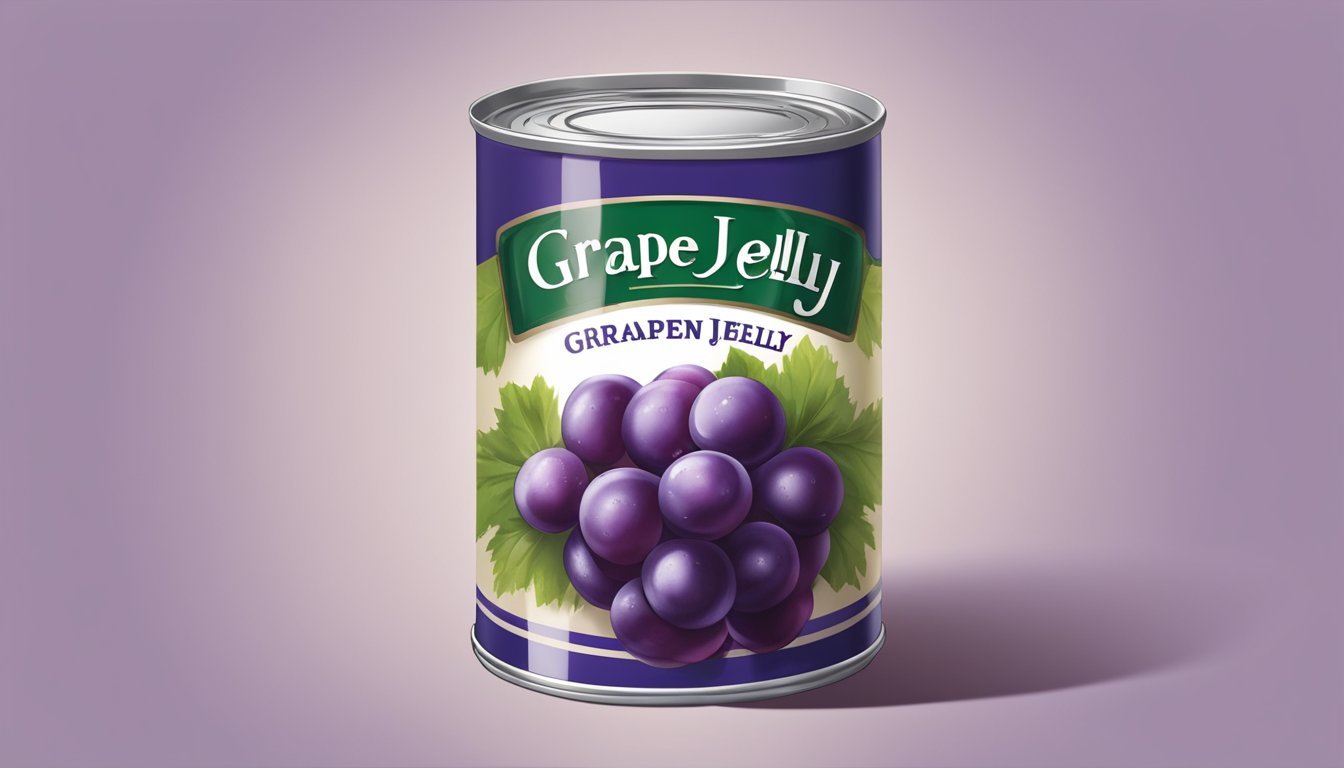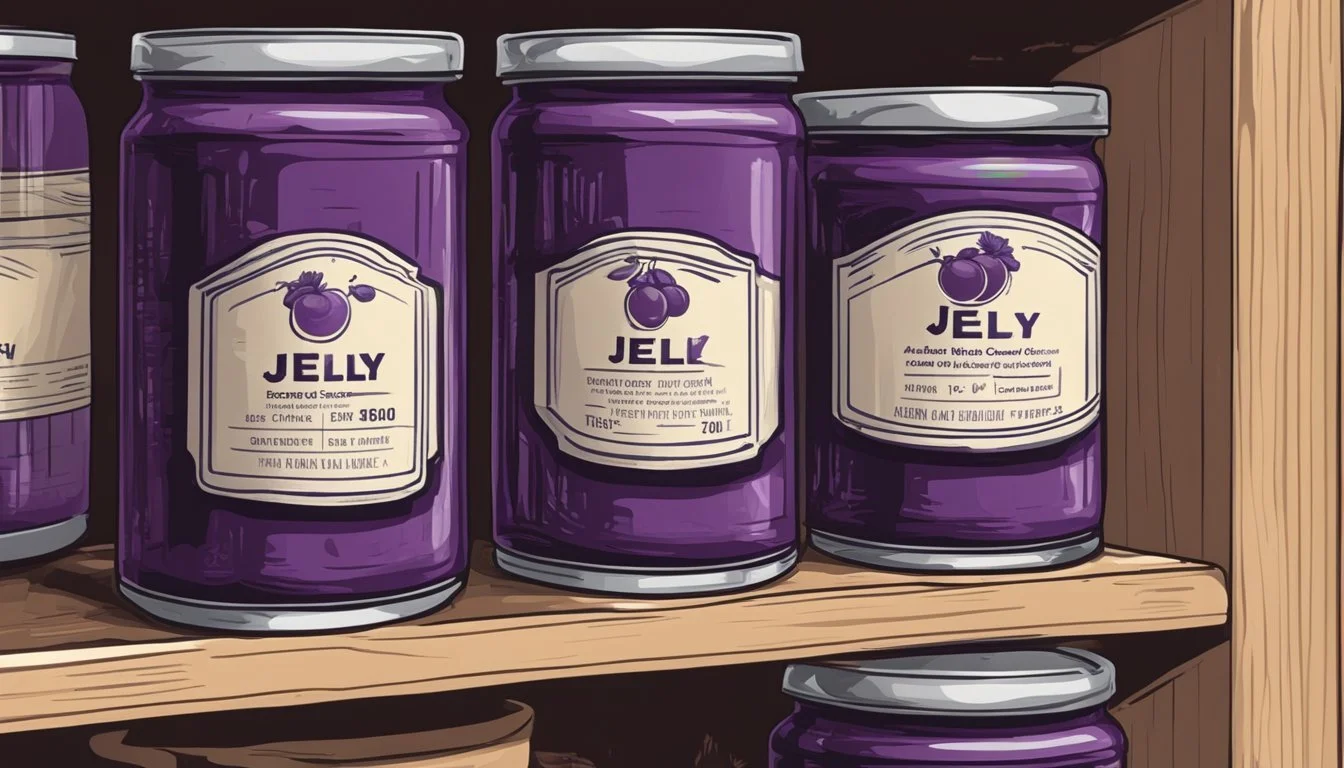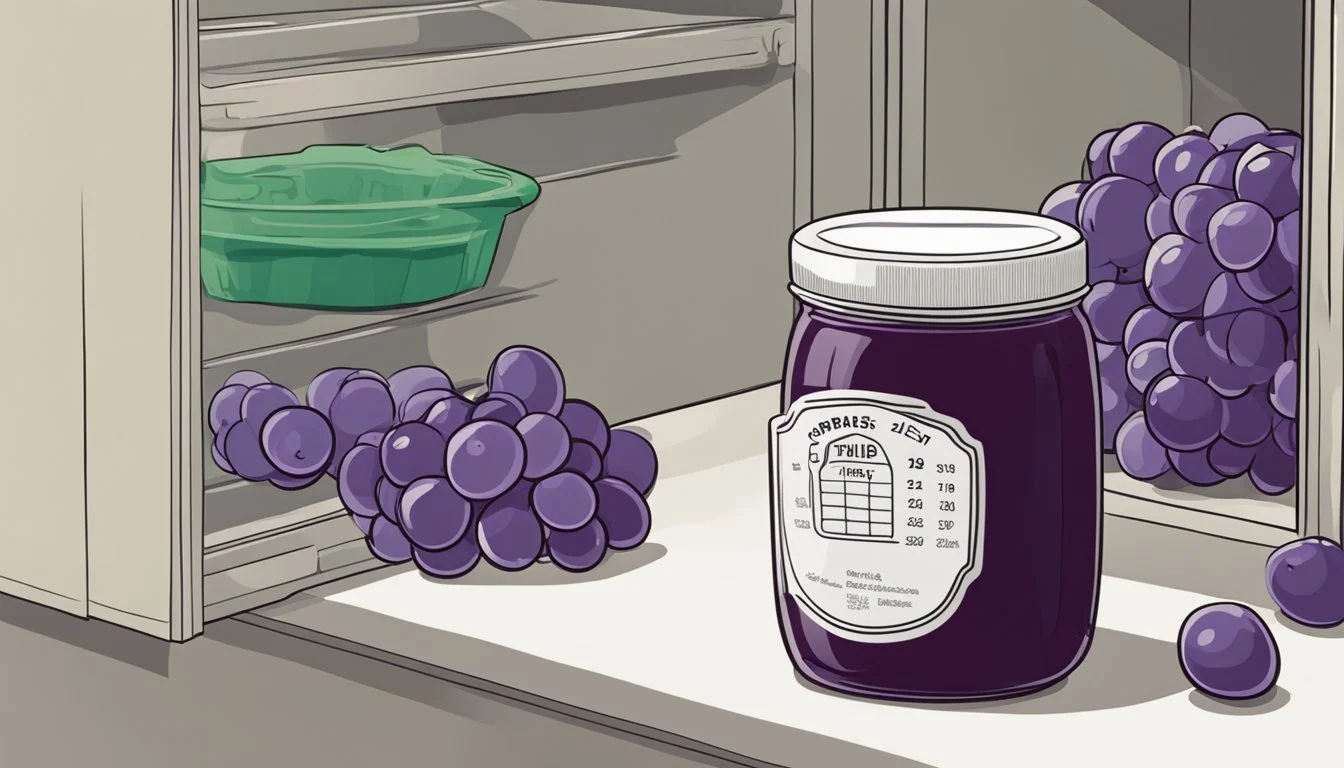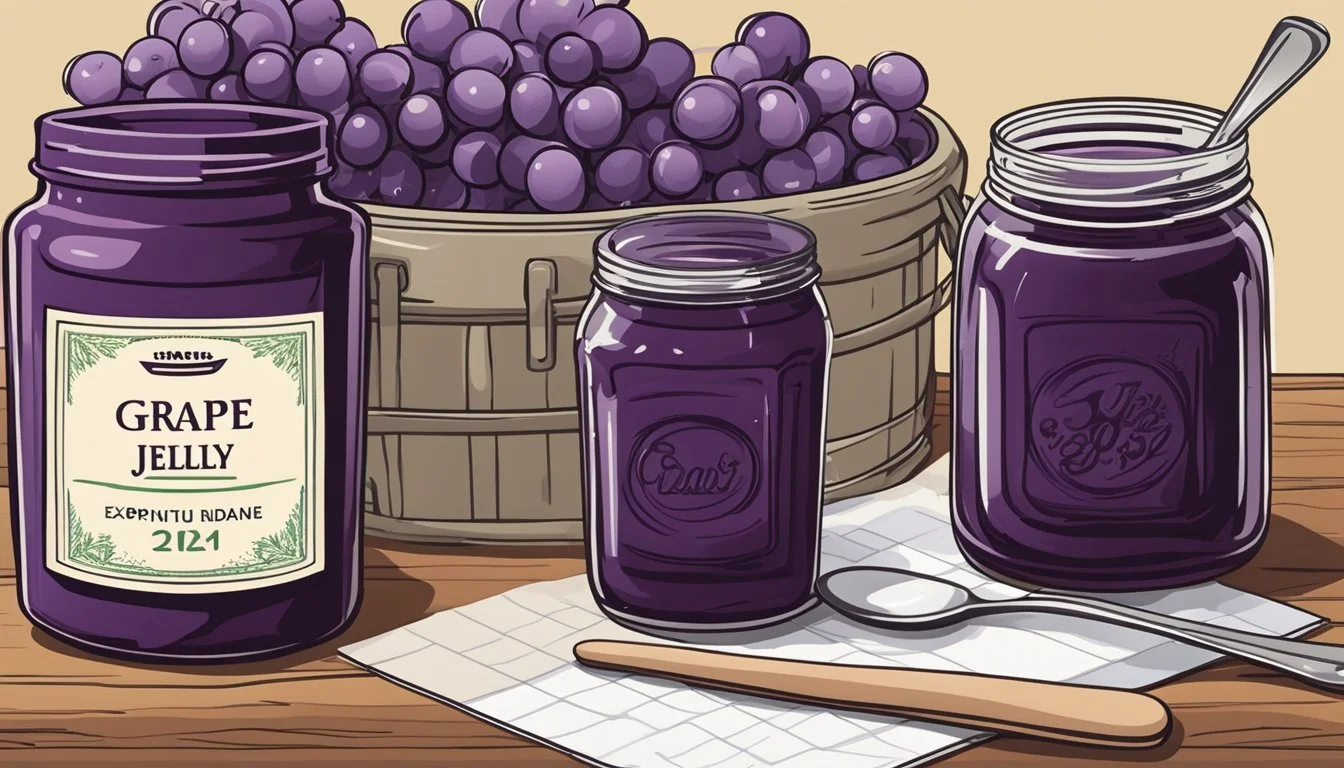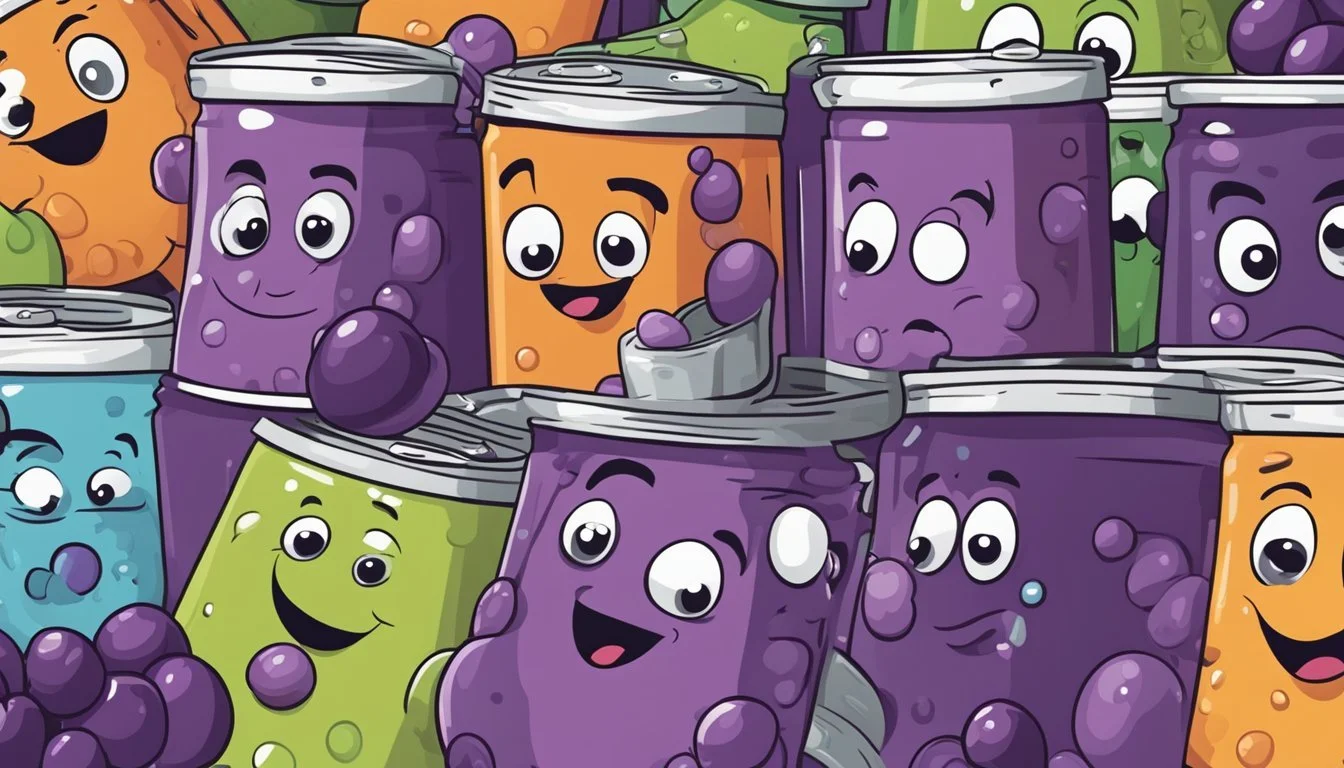Does Canned Grape Jelly Expire?
Understanding Shelf Life and Safety
Canned grape jelly offers a convenient way to enjoy the sweet, tangy flavors of grapes throughout the year. While it boasts an impressive shelf life, it's essential to understand its expiration and storage nuances. Canned grape jelly, if unopened and stored in a cool, dry place, can last for about one year from the date of production.
Once opened, the dynamics change. Properly refrigerated grape jelly generally maintains its best quality for several months, typically up to 6-12 months, provided there are no signs of spoilage like mold or an off odor. It's important to keep the jar tightly sealed and stored in the refrigerator to maximize its lifespan.
Understanding the shelf life of both unopened and opened jars can help you make the most of your grape jelly, ensuring you savor its flavor while it's still at its peak. This information not only aids in reducing waste but also in enjoying the product safely.
Understanding Jelly and Its Components
Canned grape jelly primarily derives its flavor and composition from grapes and sugar, which act as the main ingredients. The role of sugar and other preservatives is crucial in determining both the taste and shelf life of the product.
Composition of Grape Jelly
Grape jelly is mainly made from grape juice, sugar, and pectin. The choice of grape can impact the jelly's flavor and color. Commonly used grapes include Concord and Muscat varieties.
Ingredients:
Grape Juice: Provides the primary flavor.
Sugar: Acts as both a sweetener and a preservative.
Pectin: A gelling agent that helps the jelly set.
Citric Acid: May be added to enhance flavor and stability.
Each ingredient has a specific role, ensuring the jelly maintains its structure and taste over time.
Role of Sugar and Preservatives
Sugar in grape jelly isn’t just for sweetness; it also inhibits bacterial growth. This natural preservative property extends the shelf life of the jelly.
Preservatives:
Sugar: High concentrations prevent microbial growth.
Pectin: Functions as a thickening agent but also impacts shelf life.
Citric Acid: Contributes to the acidic environment, hampering microbial development.
Canned grape jelly could also include additional preservatives to further extend its shelf life and maintain quality.
Understanding these components helps in appreciating why grape jelly can last a long time if unopened, and why it is important to check for any signs of spoilage.
Shelf Life of Canned Grape Jelly
Canned grape jelly can last for a significant period, depending on whether the jar is opened or unopened and the manufacturer's suggested dates. Proper storage conditions are crucial for maximizing its shelf life.
Unopened vs. Opened Jelly
An unopened jar of canned grape jelly generally has a long shelf life. When stored in a cool, dry place away from direct sunlight and heat sources, it can stay at peak quality for 12 to 24 months. Some sources suggest it can last up to 2 years.
On the other hand, opened grape jelly should be refrigerated to maintain its quality. Typically, it can retain its best flavor and texture for about 6 to 12 months when refrigerated. After this period, it may still be safe to eat, but its quality may decline.
Manufacturer's Estimates and Safety Dates
Manufacturers provide various dates to guide consumers, such as best by, use by, and best before dates. These dates do not necessarily indicate safety, but rather the period during which the jelly is expected to be at its peak quality.
Although best if used by dates offer a good benchmark, it's important to understand that properly stored grape jelly can be safe to consume beyond these dates. Consumers should watch for signs of spoilage, such as mold or an off smell, to determine if the jelly has gone bad. Always follow the manufacturer's storage recommendations for the best results.
Signs of Spoilage in Grape Jelly
Recognizing the signs of spoilage in grape jelly can help ensure safety and maintain quality. Key indicators include visual and textural changes as well as significant odor alterations.
Visual and Textural Changes
Visual inspection is the first step in identifying spoiled grape jelly. Mold growth, often appearing as green, white, or blue patches, is a clear sign that the jelly is no longer safe to consume.
Another indicator is a change in color, which might become darker or develop streaks. Texture changes also signal spoilage; jelly that has become too thick, runny, or grainy may have deteriorated.
It is essential to check for these changes regularly, especially if the jelly has been stored for an extended period.
Odor as an Indicator of Quality
Odor can immediately reveal the condition of grape jelly.
A fresh jar typically has a sweet, fruity smell. However, when it begins to spoil, it may emit an "off smell" that is sour, fermented, or musty.
If a distrustful odor is detected, it's best to discard the jelly, even if no other signs are visible. The presence of a bad smell often indicates microbial activity or fermentation, making the product unsafe to eat. Regularly sniffing the opened jars can prevent the consumption of spoiled jelly.
Safe Storage Conditions
Proper storage of canned grape jelly is essential for maintaining its freshness and preventing spoilage. Factors such as temperature, light, and moisture play significant roles in preserving the quality of the jelly.
Best Practices for Prolonging Jelly Freshness
To maximize the shelf life of grape jelly, store it in a cool and dry place. The pantry or a cupboard away from any heat sources is ideal. Exposure to moisture should be minimized, as it can promote mold growth.
Refrigeration is recommended after opening the jelly to keep it fresh for a more extended period. Airtight containers help prevent contamination and ensure the jelly remains safe to consume.
Impact of Temperature and Light
Room temperature storage is adequate for unopened jars of grape jelly, but conditions should consistently be cool, avoiding any areas prone to heat fluctuations. Direct sunlight can degrade the quality of the jelly, leading to changes in texture and flavor.
High storage temperatures can reduce the jelly's lifespan. It’s crucial to store jelly away from appliances that emit heat. Refrigerating the jelly after opening not only maintains its quality but also extends its usability.
Proper Usage and Handling
Proper usage and handling of canned grape jelly ensure the best quality and taste, while also preventing contamination and extending its shelf life.
Serving and Re-sealing Techniques
To maintain the quality of grape jelly, use clean utensils each time it's served. Avoid double-dipping utensils to prevent introducing contaminants.
Once opened, store grape jelly in the refrigerator, tightly re-sealed, to preserve its flavor and taste. Ensure the jar lid is properly closed to keep out microorganisms and moisture.
When serving, use a spoon or spreader that hasn't touched other foods. This reduces the risk of cross-contamination, which can affect both the appearance and smell of the jelly.
Avoiding Contamination
Minimizing contamination begins with proper storage. Store unopened jars in a cool, dry place away from direct sunlight.
Once opened, refrigerate and ensure the lid is tightly closed. Check the jelly regularly for any signs of spoilage, such as mold or an off-smell.
Using clean and dry utensils helps prevent introducing bacteria and mold. When in doubt, discard any jelly that looks or smells off to maintain safety and quality.
Keeping the jelly container clean and dry on the outside also avoids attracting pests that might contaminate the food when opened.
Extending the Life of Jelly Through Freezing
Freezing is an effective method to lengthen the shelf life of grape jelly, preserving its quality and taste. This involves specific freezing and thawing procedures to ensure the best outcome.
Freezing and Thawing Procedures
To freeze grape jelly, begin by placing it in an airtight, freezer-safe container. Leave some space at the top, as the jelly may expand upon freezing. Securely seal the container.
Label it with the date for tracking purposes. Store the jelly in the freezer, where it can last up to a year while maintaining optimal quality.
For thawing, transfer the container from the freezer to the refrigerator. This allows for a gradual thaw, which preserves the texture and taste. It's recommended to consume the thawed jelly within two to three weeks.
Avoid refreezing thawed jelly, as it may lose flavor and consistency. If done correctly, freezing extends the life of grape jelly efficiently.
Assessing Consumption Safety
For safe consumption of canned grape jelly, it's essential to be aware of potential spoilage indicators and follow food safety guidelines. This ensures the jelly can be enjoyed without health risks.
When to Eat or Discard Jelly
Unopened Jelly: Keep it in a cool, dry spot away from direct sunlight. It's considered safe to eat for up to a year past the expiration date, as long as there are no signs of spoilage.
Opened Jelly: Must be refrigerated at 32-40°F (0-4°C). Consume within 6 months to a year.
Check the jelly for spoilage indicators like mold, foul odor, or any change in texture. If any are present, it should be discarded immediately to avoid foodborne illness.
Signs of Spoiled Jelly:
Mold
Unusual smell
Change in texture
Ignoring these signs can lead to potential health risks. The USDA recommends checking the appearance and aroma before consuming any food past its expiration date to avoid getting sick.
Comparing Homemade and Store-Bought Jellies
Homemade and store-bought grape jellies differ significantly in their shelf life and preservation methods. These differences stem mainly from the ingredients and storage techniques used.
Shelf Life Variations
Store-bought grape jellies typically have a longer shelf life due to the inclusion of preservatives. Unopened jars can last up to 1 year past their expiration date if stored in a cool, dry place.
Homemade grape jellies, on the other hand, should be consumed within 6 months to a year, even when unopened. This is because homemade versions lack chemical preservatives. The lifespan of homemade grape jellies also depends greatly on sugar content, which acts as a natural preservative.
Once opened, both homemade and store-bought jellies should be refrigerated. They should also be checked regularly for signs of spoilage, such as mold or off-odors, to ensure safety.
Differences in Preservation
The preservation techniques for homemade and store-bought jellies vary. Store-bought jellies often include preservatives and stabilizers that extend their shelf life. These jellies are usually stored at room temperature before opening.
Homemade jellies rely on natural preservatives like high sugar content and sometimes lemon or lime juice. These ingredients help prevent spoilage by inhibiting the growth of bacteria and mold.
Canning is a common method for preserving homemade grape jelly. This involves sealing jars in boiling water to kill bacteria and create a vacuum seal. The effectiveness of this method depends on following precise canning procedures.
Both types benefit from being stored away from direct sunlight and heat sources to maximize their shelf life.
Frequently Encountered Grape Jelly Concerns
Grape jelly, both opened and unopened, faces several issues impacting its longevity and quality. Knowing these concerns and how to address them can help ensure your grape jelly stays fresh and enjoyable.
Oxidation and Color Shifts
Oxidation occurs when grape jelly is exposed to air. This can lead to changes in color and flavor, making the jelly less appealing. Unopened grape jelly is less likely to be affected by oxidation as it is sealed, but improper storage conditions can still cause deterioration.
Store unopened jars in a cool, dark place away from direct sunlight to minimize oxidation. Once opened, always ensure the lid is tightly sealed to limit air exposure. Color shifts, such as from a vibrant purple to a dull brown, are common indicators of oxidized jelly.
Monitoring for any unusual off-smells or textures can also help identify if the jelly has been compromised by oxidation. Proper storage can significantly extend the shelf life and quality of the jelly.
Storage After Opening
After opening, grape jelly requires refrigeration to maintain its quality. It can last 6 to 12 months under optimal refrigeration conditions. Keep the jelly in a consistent, cold environment to prevent the growth of molds and bacteria.
Labeling the jar with the date it was opened can be a helpful reminder of its freshness period. Always use a clean utensil to avoid contaminating the jelly and causing premature spoilage.
Storage conditions, such as maintaining a consistent refrigerator temperature, are critical for extending the life of opened grape jelly. Even though unopened jelly can last much longer at room temperature, the opened product is more sensitive to environmental changes. Avoid leaving the jar out for extended periods to ensure it remains safe to consume.


